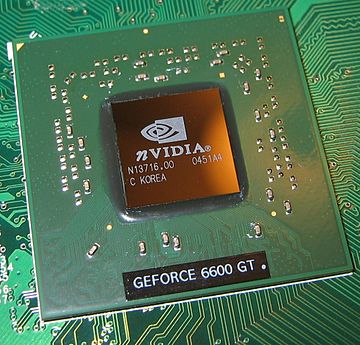Did you know?
You can double click on a word to look it up on TermGallery.
You can double click on a word to look it up on TermGallery.
Meanings of vpu in inglês

Specialized electronic circuit; control and arithmetic logic.
russo
графический чип português
processador gráfico espanhol
unidad de procesamiento de graficos catalão
unitat de procés gràfic 
Specialized electronic circuit; graphics accelerator.
Association of companies working in Germany.
Related terms
Usage of vpu in inglês
1
The gag-vpu region of 87 plasma samples from HIV-infected individuals from three cohorts was amplified and sequenced by Illumina HiSeq2500.
2
Single genome analysis of vpu repertoires throughout infection in 14 individuals infected with HIV-1 clade B revealed extensive amino acid diversity of the Vpu protein.
3
These aspects of Vpu and BST-2 form an anti-parallel, lipid-embedded helix-helix interface.
4
These studies are complementary to earlier analysis of the transmembrane domain of Vpu.
5
The Vpu amino acid residues involved in the interaction with CD4 were identified.
6
Whether this Vpu activity strictly requires cellular depletion of the restriction factor is unclear.
7
The HIV-1 accessory protein Vpu can efficiently antagonize this restriction.
8
The HIV-1 Vpu protein is expressed from a bi-cistronic message late in the viral life cycle.
9
All mutants still potently impaired release of Vpu-defective HIV-1 and remained sensitive to Vpu-mediated release enhancement.
10
Using NMR spectroscopy, we find that the cytoplasmic domain of Vpu and Trp-76 specifically interact with lipids.
11
We showed that the hydrophobic binding surface for tetherin lies in the core of the Vpu TM domain.
12
Changing the polarity of the amino acids at these positions resulted in severe impairment of Vpu-induced tetherin targeting and antagonism.
13
The mutants had similar subcellular localization patterns with that of wild-type Vpu and were functional with respect to CD4 downregulation.
14
In this article, we describe investigations of the cytoplasmic domain of Vpu as well as full-length Vpu by NMR spectroscopy.
15
Interspecies chimeras reveal that the rodent-specific resistance and human-specific sensitivity to Vpu antagonism involve all three major structural domains of CD317.
16
The interactions of Vpu with these proteins interfere with the immune system and enhance the release of newly synthesized virus particles.
About this term
Frequent collocations
Translations for vpu
russo
catalão
espanhol
Vpu through the time

